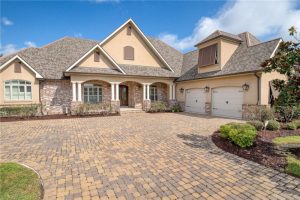Creating a Harmonious Indoor-Outdoor Living Space with Timeless Design
Transforming your outdoor area into a seamless extension of your indoor space is not just a trend but a lifestyle choice that enhances your home’s aesthetic and functionality. Nicole Salceda of the Bay Area interior-design studio Eye for Pretty offers expert advice on achieving a cohesive and sustainable design that bridges the gap between your indoor and outdoor living areas.
Before diving into design choices, Salceda emphasizes the importance of understanding how the space will be used. Whether you’re hosting large gatherings or seeking a tranquil spot to unwind, identifying the purpose of your outdoor space is crucial. This understanding should align with your indoor living preferences to create a balanced environment throughout your home.
To achieve visual continuity between your indoor and outdoor spaces, Salceda recommends incorporating natural materials like jute, rattan, and teak. These elements not only blend beautifully with the outdoors but also add a warm, organic touch to your interior. For those seeking a more durable alternative without sacrificing style, Cosentino’s Dekton surfaces mimic the look of natural stone while offering resistance to sun, wind, and weather.
Sustainability is another key factor in Salceda’s design philosophy. Opting for environmentally friendly materials like Cosentino’s Silestone and Dekton not only contributes to a healthier planet but also ensures that your spaces remain timeless and durable. Both materials are celebrated for their impact, scratch, and stain resistance, backed by a 25-year warranty, underscoring the importance of investing in long-lasting design elements.
Salceda advises treating your outdoor space with the same care and attention as any indoor room. This means extending your design aesthetic beyond furniture to include soft furnishings like pillows, rugs, and throws, as well as ambient lighting to create a welcoming atmosphere. These additions encourage guests and family members to spend more time outdoors, enjoying the natural beauty and comfort of your extended living space.
Incorporating natural light plays a vital role in harmonizing indoor and outdoor areas. Salceda suggests maximizing light with large sliding doors, expansive windows, or strategically placed mirrors to reflect natural light and enhance the sense of openness.
By following these expert tips, you can create an indoor-outdoor living space that not only looks beautiful but also serves the needs and preferences of your family. Embracing natural materials, prioritizing sustainability, and ensuring continuity in design will make your home a haven for relaxation and entertainment. Remember, a well-designed outdoor space is not an afterthought but a valuable extension of your indoor living area, promising endless enjoyment and a closer connection to nature.



